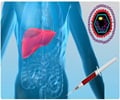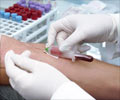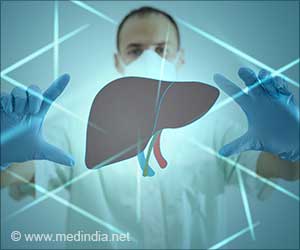HDV (hepatitis D) virus can only infect individuals at the same time as HBV (co-infection) or superinfect individuals who are already chronic carriers of HBV, reports a new study.

‘Hepatitis D virus is a defective RNA virus that requires hepatitis B virus envelope proteins (HBsAg) to fulfill its lifecycle.
’





"HDV needs HBV to survive; it's like a parasite," says researcher Patrick Labonté who specializes in liver viruses (hepatitis). However, cure rates are low because treatments for hepatitis B are ineffective against HDV."
"It may seem contradictory since the virus cannot survive on its own," he adds. "In fact, drugs target a specific enzyme to control hepatitis B, but treatment does not completely eliminate the virus. The VHD survives normally and can continue its damage."The challenge for Professor Labonté and his research team is thus to find a treatment that will fight both viruses, and it seems they are on the right track.
In a study, the team showed that VHD was exploiting the same cellular protein as HBV, called ATG5, to promote its development, particularly its replication in the nucleus of the host cell. This protein is essential for what is called autophagy, a process that is used for cleaning cellular waste. In theory, autophagy should be able to destroy invaders, but most viruses, such as hepatitis C or influenza, have evolved to avoid this degradation and even use autophagy to their advantage.
"Several studies have looked at the role of autophagy in viruses, but it varies from one virus to another depending on its replication process. We are the first to determine the effect of the process on the hepatitis D virus," says Professor Labonté, who is also the study's corresponding author. He was not surprised that ATG5 protein benefits these two hepatitis viruses since they are closely linked.
Towards a Potential Treatment
Advertisement
According to the World Health Organization, at least 5% of people with chronic HBV infection are also infected with HDV. HBV-HDV co-infection is the most severe form of chronic viral hepatitis because it progresses very quickly and can even be fatal. "Hepatitis B virus alone can cause cirrhosis or liver cancer. When combined with the hepatitis D virus, the development of these diseases happens more frequently and more rapidly," he says.
Source-Eurekalert















